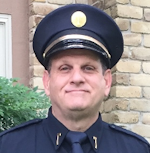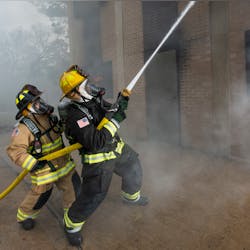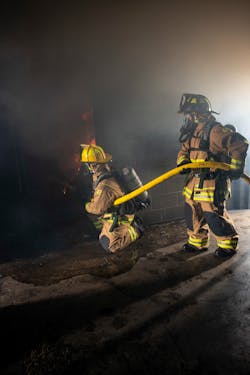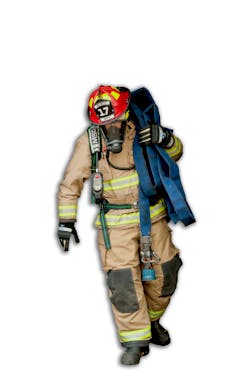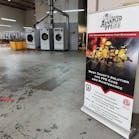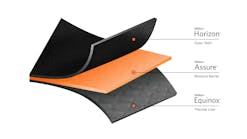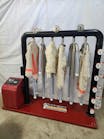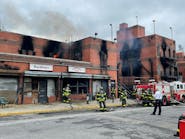Specifying Turnout Gear: Protecting All of Your Interests
Firefighters perform their duties in ever-changing environments, but day-to-day needs of multi-hazard firefighting PPE hasn’t changed. The increase in the use of synthetic materials in the home hasn’t abated. Time from ignition to flashover isn’t slowing. Incidence of accidental and intentional fires amid uncertain economic conditions is increasing.
Firefighters need a protective turnout coat and pants that allow them to do the job that the citizens expect efficiently, effectively and safely.
Members’ perspective
Across the United States and elsewhere, fires are reaching higher temperatures faster and burning hotter. That’s not opinion; it’s proven scientific fact. Free-burning fires now can reach flashover in less than four minutes. (Underwriters Laboratories [UL] did extensive work in this area, and its “Comparison of Room Furnishings: Legacy Room vs. Modern Room” video shows this very clearly.)
Nevertheless, firefighters want to be protected in a manner that allows them to safely rescue people, protect savable property, perform extinguishment of the fire and go home at the end of the shift in the same condition that they showed up in at the start of their tour. Yes, they want “lighter,” “more breathable” and “better fitting” turnout gear but “protection” is first and foremost. Want to test this for yourself? Set up focus groups with firefighters who use the gear. Informal coffee table discussions seem to elicit the most honest responses.
One important note to remember: Many firefighters believe that “as long as it meets NFPA, it’s good.” NFPA standards are minimum standards, and those minimum standards apply to the entire protective ensemble. They don’t just apply to coats and pants. You always should aspire to go above the minimum. How do you do that?
It always struck me as kind of silly that all too often the people who actually wear and use the gear don’t have a significant, if not total, involvement in the research, evaluation, and selection of the protective clothing and equipment that they wear. You don’t want bunker gear specifications that are based solely on “meeting” NFPA standards or that are based on one person who sits in an office and hasn’t been to a fire in more than a decade.
Furthermore, in the down economy that we’re experiencing currently, it might be more important than ever to be able to justify what the people who actually squirt water on the fire, drag the hose, climb the ladders, pull the ceiling, crawl down a hallway, and do the search and rescue select to wear when they are on the job.
I always hear, “Well, 85 percent of our calls are EMS.” OK, but what percentage of our deaths or burns are from a fire? What percentage of our cancer is from a byproduct of the fire? For me, firefighter death and injury in the fire or from the fire isn’t a percentage. One is too many.
Information-gathering
So, you need a new turnout coat and pants? Why? Age, increasing injuries, technologically advanced materials, better design, innovation or a second set to be worn while the first is receiving an advanced cleaning? All of these factors are legitimate needs.
Coat and pants always should be specified, evaluated and purchased as a set. They get measured, fitted and worn together, cleaned and tested together, age together.
How do you enable that process of engaging the firefighters who will wear that gear to provide justification for what you need based on your department’s risk assessment? Form a firefighting PPE committee, or research and development committee. Assemble this committee with personnel of various rank, experience, age, gender, duty assignments and geographic station location.
Have members of the committee do research. A ton of resources of information are available online: government agencies, professional organizations, online magazines, manufacturers, fabric/fiber producers and safety/testing/certification organizations.
Do site visits. Manufacturers and fabric/fiber producers believe in educating potential customers about their products and about how those products help to keep firefighters safe and, therefore, like to have fire departments visit. If you can’t facilitate an on-site visit because of the small size of your department, consider forming a mutual specification collaborative in which small entities or departments agree on a specification that’s the same. Also, have a vendor/manufacturer presentation day when you have all of these small entities/departments in the same location.
Go to a trade show or conference. The value of seeing everything in one spot—putting your hands on the fabrics, fibers and garments, seeing them up close and personal—and of the ability to do real-time comparisons and Q&A of industry people can’t be overstated.
Once you have your information and education, what are your personnel’s priorities? Thermal protective performance (TPP)? Total heat loss (THL)? Fit, function, durability, mobility? Accessories, such as knee pads, zippers, snaps, shoulder reinforcement, pockets, etc.? That said, always be cognizant that every layer that you add outside of the three basic composite layers—thermal barrier, moisture barrier and outer shell—decreases breathability and adds weight. Consult your department’s risk assessment to aid in prioritizing turnout gear specification requirements.
Not all turnouts are the same
Unsurprisngly, manufacturers offer different styles of turnout gear that address different safety, performance, ergonomics, features, fit and other requirements. There is no one solution that’s right for every department, so it’s important to compare turnout gear styles to select the style, feature set and options that meet your department’s needs as identified in the risk assessment.
Turnout gear is personal equipment, so style and comfort, although more subjective, also are important considerations when looking to improve your specification through the evaluation process.
Establish your numbers
One thing for all of you to know about certification testing numbers: In my 33 years of experience serving in the fire service, TPP is a fair indication of thermal protection within a couple of points.
You must subject everything that you will wear to a realistic heat and function evolution: You should test like you work.
THL test results, on the other hand, can vary quite a bit. Because we’re told that there could be a 20-point (or more) variation plus or minus in actual total heat loss from the published THL number, the THL number should be considered, at best, a guide rather than a hard number—thus placing even more emphasis on wearing the gear and using it in all of the “seasons” that you have in your geography.
You’ll start to hear more about resistance to sweat evaporation. It’s another measurement of breathability in addition to THL. (There’s discussion in NFPA committees about including it in the next version of NFPA 1971: Standard on Protective Ensemble for Structural Fire Fighting and Proximity Fire Fighting.)
Outer shells, moisture barriers, thermal barriers and the certified composite combinations themselves can be something between confusing and overwhelming. Departments face many choices when narrowing down material solutions that will meet their needs. Finding a knowledgeable person(s) who has nothing to gain by giving you information or an honest opinion can be very valuable in your research and evaluation. Remember the old saying: telephone, telegraph, tell a firefighter. We are our own best sources of information. There are many conscientious, stand-up, honest and informed people in the firefighting PPE realm.
Inviting manufacturers
It’s important to communicate your department’s parameters for evaluating turnout gear with the manufacturers of the gear that you want to assess. Taking that into consideration, here’s a possible template to use as an invitation to a vendor/manufacturer to participate:
“The (Name) Fire Department’s evaluation of firefighting coats and pants is planned to begin no later than (date) and conclude at the department’s discretion, to properly assess all aspects of coats and pants, including fit, function, durability and mobility.
All manufacturers that produce their products in (the United States, etc.) are invited to participate. The following parameters will apply to all products and all participants:
- A minimum of (number) sets of structural turnout gear shall be submitted.
- All products must meet the current applicable NFPA 1971.
- Participants will ensure that correct sizing is provided for each evaluator who wears the product.
- Participants must ensure that training is provided to meet any applicable aspects of the current issue of NFPA 1851: Standard on Selection, Care, and Maintenance of Protective Ensembles for Structural Fire Fighting and Proximity Fire Fighting.
- The composite garment shall be rated at a thermal protective performance, or TPP, that isn’t less than (TPP number) and no greater than (TPP number) and a total heat loss, or THL, that’s greater than the (Name) Fire Department’s current total heat loss of (THL number).
Note: TPP should be a range of 2–3 points, and THL should be above a certain value. Both NFPA minimums are too low, in this author’s opinion, but should be aligned with the department’s risk assessment.
- The thermal barrier should be a naturally moisture-wicking material.
- The reflective trim that’s used shall be an NFPA-approved trim.
- Before being accepted to participate, a letter from a certified third-party testing laboratory that states that the models of their products were tested and meet the requirements that are set forth in NFPA 1971 must be provided by the vendor/manufacturer.
- Any style, seam, stitching, design concept and innovation that already is included as part of the current (Name) Fire Department’s specification should take precedent in the construction of gear that’s submitted unless an approved equal or alternative is allowed by the (Name) Fire Department.
- All products that are submitted by the vendor/manufacturer and accepted for evaluation become the property of the (Name) Fire Department.”
Self-educate & evaluate
The best way to get buy-in and valid recommendations for specifications is to subject products to staged and everyday usage. For example, at first glance, a product might feel great, fit fantastically and look cool, but when it’s subjected to the heat that’s encountered in a fire or the on/off/use/wash cycles that are encountered in the real world, a firefighter can get burned, figuratively and literally. I participated in numerous staged live fire evolutions where the latter happened: burns encountered in the same spot on everyone who wore test bunker gear and hoods.
You must put these products through their paces in some fashion or another and conduct a thorough review before actually going through the process of specifying and purchasing them.
Furthermore, after receipt of what you ordered, make sure that the product is the product that you requested. If you can, request one extra of everything after the process is over for this reason. I had experiences in which extra layers of material were found that weren’t called for or permitted in “clothing.”
A lot goes into selecting turnout coats and pants and rightly so, because they are personal protective equipment to help to keep you safe while you do your job. You must create a department risk assessment to identify the hazards that firefighters might encounter in the course of their duties and to describe appropriate levels of personal protection to operate safely and effectively in conditions that might expose them to those hazards. You must evaluate turnout gear the way that you use it—or simulate firefighting activities as closely as possible. Educate yourself via a discerning eye and ear. Seek information that’s factual, scientific and experience-based. Engage the people who will use the items in their everyday responses to facilitate evaluations.
